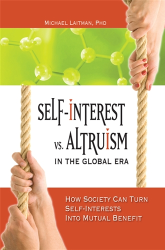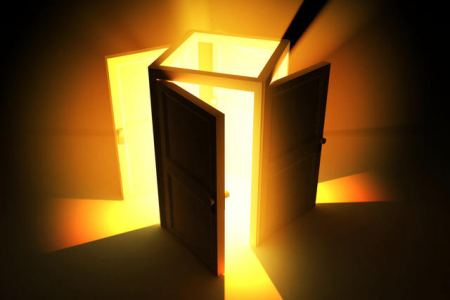How Kabbalah Was Kept Secret Up Until the Renaissance
In tune with the shifts that took place at the onset of the Renaissance, Kabbalists began to remove the veil from the wisdom of Kabbalah, or at least to speak in favor of removing it. Since the writing of The Book of Zohar, Kabbalists have set up various obstacles before those who wished to study. It began with Rashbi’s concealment of The Zohar and continued with declaring all sorts of prerequisites that one had to meet before receiving permission to study. The Mishnah, for instance, gives the apparently paradoxical instruction to avoid teaching Kabbalah to students who are not already wise and understand with their own mind, but the text does not specify how is one to come by wisdom if one is not permitted to study.
In the Babylonian Talmud, there is a well known allegory about four men who went into a PARDES (an acronym for all forms of spiritual study—Peshat (literal), Remez (Implied), Derush (interpretations), and the highest level being Sod, Kabbalah). Of the four, one died, one lost his sanity, one became heretical, and only one, Rabbi Akiva, who was a giant among Kabbalists—entered in peace and departed in peace. There are other deeper and more accurate explanations to this allegory, but the story was nonetheless used to intimidate and deter people from studying Kabbalah.
Another prerequisite that Kabbalists set up was to “fill one’s belly with” (be proficient in) Mishnah and Gemarah before one approaches the study of Kabbalah. To justify that condition, they cited the Babylonian Talmud, which warns that one must spend a third of one’s life studying the Bible, another third studying Mishnah, and the remaining third studying The Talmud.
This, of course, leaves no time to study Kabbalah, so when the time came for Kabbalists to permit the study, they had to “make room” in the day for the study of Kabbalah. Thus, Kabbalists such as Tzvi Hirsh of Zidichov, “detoured” the prohibition by declaring that every day, one must “fill one’s belly with” Mishnah and Gemarah, and then study Kabbalah.
Why Kabbalah Is the Only Means to Correct a Person
There are numerous examples for Kabbalists’ proclamations that Kabbalah is the means for salvation (correction of the soul, meaning to give the desire to receive the aim to bestow), and that it should not be neglected. Moreover, as a rule, the more recent the Kabbalist, the greater the tendency to give preference to the study of Kabbalah over any other form of study.
The Book of Zohar says, “At the end of days, when your composition [The Book of Zohar] appears below, because of it, you will set the land free [liberate the desire from egoism, i.e. correct it].”
To Kabbalists, the appearance of such a systematic and structured method as the Ari’s marked the beginning of the end of days, or what they refer to as “the last generation.”
In his introduction to The Tree of Life, Chaim Vital wrote, “Even in this, last generation, we are not disgusted and we do not loathe breaching His [the Creator’s] covenant with us.” In other words, in Vital’s view, which he repeats several times in this introduction, we are in the last generation, yet we still have no wish for correction from egoism to altruism.
Moreover, he continues, “When it so happens that the days of Messiah draw near [toward the end of correction], even little children will understand the great secrets of the wisdom. Also, it has been explained that thus far, the words of the wisdom of The Zohar were hidden, but in the last generation this wisdom will emerge and become known.”
Vital also explains that all the problems of Adam ha Rishon—the collective soul that we all comprise—stem from not knowing Kabbalah. In his words, “It was explained… that the sin of Adam ha Rishon [though Kabbalists refer to his sin as a ‘mistake,’ not as a deliberately malicious act] was that he did not choose to engage in the Tree of Life, which is the wisdom of Kabbalah.”
The End of the Prohibition to Study Kabbalah
In the rest of the above quoted text, Chaim Vital attempts to ease people’s approach to Kabbalah by clearing up the prevalent misconceptions that Kabbalists have been fostering since the concealment of The Book of Zohar. In his words, “This, itself, is the sin of the mixed multitude [a reference to those among the Jews who prohibit the study of Kabbalah], who say onto Moses, ‘You speak to us…and let God not speak to us lest we die in the secrets of Torah [a common epithet to the wisdom of Kabbalah].’ It is as the erroneous ones believe and say that any person who engages in it [Kabbalah] will live a short life. Today, it is they who slander and give a bad name to the wisdom of truth [another epithet for Kabbalah].”
In another place, he adds, “Thus far, the words of the wisdom of The Zohar were hidden, but in the last generation [which Vital defines as his generation] this wisdom will appear and become known, and they will study and comprehend the secrets of Torah [Kabbalah], which the former ones did not attain. By that, the objection of the fools who say, ‘If the former ones did not know it, how will we?’ shall be revoked. As it is explained, in these last generations they will be nourished by that composition [The Book of Zohar] and that wisdom will appear to them.”
While under the patronage of his mentor, the Ari, Chaim Vital had the privilege of learning from the highest Kabbalah authority of his time. Still, Vital was not the only voice in and around his generation to laud the need to publicize Kabbalah. Kabbalist Avraham Ben Mordechai Azulai (1570-1644), clearly expressed the need to publicize Kabbalah from his time forth: “I have seen it written that the prohibition… to refrain from open study in the wisdom of truth was only… until the end of 1490. But from then on the prohibition has been lifted and permission was granted to engage in The Book of Zohar. And from the year 1540, it has been a great Mitzva [commandment, but also good deed] for the masses to study, old and young… And since the Messiah will come because of that, and for no other reason, we must not be negligent.”
Why the 16th Century Was the Golden Age of Kabbalah
In the 16th century, the town of Safed, in today’s Northern Israel, was the “capital” of Kabbalah. This was also the town where the Ari had lived and taught his students. The greatest Kabbalist in Safed until the arrival of the Ari was Moshe Cordovero (1522-1570), known as “the Ramak.” He preceded the Ari by a few years, but he could already sense the approaching of a new stage of desire. In his book, Know the God of Your Father, he wrote, “The whole Torah speaks of nothing but the existence of the Maker and His merit in His Sefirot and His operations in them. And the more one studies its secrets [Kabbalah], the better, since one utters His merit and does wonders in the Sefirot.”
Over time, Kabbalists sensed an increasing urgency for people to study Kabbalah because they feared that problems and calamities would ensue if people did not know life’s basic modus operandi. They even began to write in favor of teaching children. Yitzhak Yehuda Sarfin from Komarno (1806-1874), for example, wrote in his book, Notzer Hesed (Keeping Mercy), “Had my people heeded me in this generation… they would have studied The Book of Zohar and the Tikkunim (corrections, part of The Zohar), and contemplated them with nine-year-old children.”
Similarly, Kabbalist Rav Shabtai Ben Yaakov Yitzhak Lifshitz (c. 1845-1910), wrote in his book, Segulot Israel (The Virtue of Israel), “May they begin to teach the holy Book of Zohar to children when they are still small, ages nine or ten, as it was written by the great Kabbalist… and redemption [complete correction] would certainly soon follow.”
The Link Between Kabbalah and Hassidism
To some extent, the Kabbalists succeeded in their efforts. The Hassidut (Hassidism) movement, established in the 18th century Polish-Lithuanian Commonwealth (today’s Ukraine) by Rabbi Israel ben Eliezer, (1698–1760), known as The Baal Shem Tov (owner of the Good Name), produced a great many Kabbalists. Once the students of The Baal Shem Tov attained sufficient proficiency in Kabbalah and a clear enough perception of the spiritual world, he sent them to other towns to continue spreading the wisdom. The students of The Baal Shem Tov nurtured more students, helped them attain spiritual perception, too, and in turn, sent them on their way to further spread the wisdom. Thus, a vast movement was formed, whose heads were all Kabbalists.
Yet, in time, just as it happened to the people of Israel before the ruin of the Second Temple, the spiritual level of the teachers declined until they lost their spiritual attainment altogether. Even so, the positive effects of the Hassidut cannot be overrated when considering The Baal Sham Tov’s success in introducing the hitherto hidden wisdom to the masses.
 “The Conclusion of the Renaissance Ends the Concealment of Kabbalah” is based on the book, Self Interest vs. Altruism in the Global Era: How Society Can Turn Self Interests into Mutual Benefit by Dr. Michael Laitman.
“The Conclusion of the Renaissance Ends the Concealment of Kabbalah” is based on the book, Self Interest vs. Altruism in the Global Era: How Society Can Turn Self Interests into Mutual Benefit by Dr. Michael Laitman.

